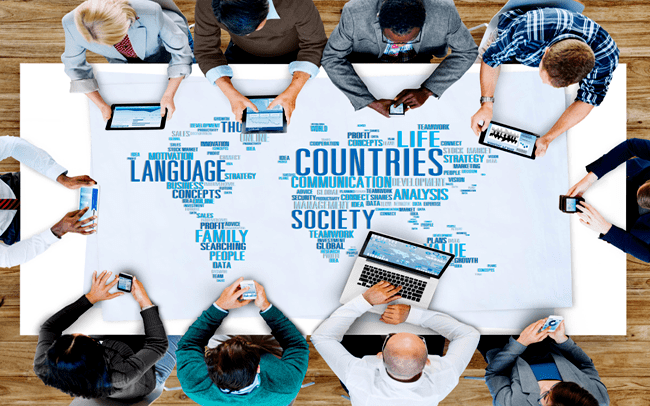Translations of course, but done professionally

Funded courses, easier than you think
6 February 2019Have you ever thought that “the world is just such a small place”? Perhaps while traveling on the other side of the world you met a neighbor, or at a social event you bumped into a high school mate you hadn’t seen since. There are plenty of similar stories!
There’s another reason why the world is small nowadays: we’re connected both digitally and through multimedia and this interaction, at personal as well as professional level, is increasingly transnational and transcultural.
In a world that is more and more often reachable with just a click, translations of contents representing a company and its products, including anything destined to go online, must be done well.
In this context, English becomes the “passport” language that allows our interaction with most of the world. For instance, we Italians can browse e-commerce and many other websites of the English-speaking countries, as well as those of many other countries, since they’re translated into English. Thus, we can search for what we want, read and download data, and even complete orders.
But what happens to foreigners who visit an Italian website and don’t understand the language? Unfortunately, regardless of the 2018 Etnologue report stating that Italian is the 4th most commonly studied idiom, we certainly cannot claim that our language bears the same weight as English, especially in the professional world. So, the answers to the question above are the following:
1. if the website is only in Italian, the foreigner with goodwill and interest will try to make sense of it with Google Translate, an unreliable aid to be rather wary of.
If the Italian website visited by the foreigner is an e-commerce of a small company wishing to expand its business internationally, cases 1 and 2 lead to serious problems. The consequences can be a significant loss of sales, a terrible user experience on the website and – indirectly – this will reflect on the brand. Indeed, it could well mean that the client won’t return.
The fact is that the badly translated website may well be the business card of an Italian product, which – contrarily to the translation – is of a high quality.
Sometimes we hear people say, in reply to our quotes, “I’ll get a friend who knows English (or another language) to do the translation“, or “I know someone who uses automatic translators” and so on. It’s true, nowadays there are many software packages that support translators in their work, however it isn’t at all a good idea to rely on them entirely. A good translator knows this well. Actually, revising a text translated automatically – a service often required – is always an activity that takes just as long as the translation itself, even though clients usually believe it only requires re-reading carefully. And, as far as the friend “who knows English” is concerned, we hope he or she is a certified translator!
Well drafted translations, completed by reliable and expert translators, are the connecting means of the global economy. Consequently, companies wishing to become international cannot exempt themselves – whatever language they need. English first of all, but if they want to export to China they must have a perfect Chinese translation.
A bit of history and some examples: the act of translation has always been a part of history and culture. For instance, we can think of the Bible, that has been translated into at least 531 languages. And in the following, some of the most striking examples of completely mistaken translations:
– An anecdote about the 2015 MilanExpo: the bilingual advertising billboard was exhibited with an absurd mistake. The sentence “Acquista in Fiera il tuo biglietto Expo” became “But (instead of buy) your Expo ticket at Fieramilano”.
– The Pepsi motto a few years back was “Brings you back to life”, it got translated into Mandarin Chinese as: “Pepsi brings your ancestors back to life from their tombs”. Makes you shudder, right?
– Even the well-known American brand KFC had some difficulties in China: the historical slogan “Finger-lickin’ good”, was translated as “Eat your fingers” in Chinese.
– Still referring to China, there was a considerable “cultural incident” for a Dolce & Gabbana video spot in 2018. It was supposed to promote a fashion show event in Shanghai, but it ended up creating damage to both the fashion brand’s image and its economics.
We could continue with the fact that Cinderella’s slippers were not in crystal but made of fur. Additionally, the Montecassino abbey was bombed during World War II because of a translation mistake! And, last but not least, what about those famous brands that in reproducing their slogan or product name in a foreign country don’t check whether the term has a different meaning in that language, sometimes even with sexual implications…
Having mentioned the Bible, consider that the Moses iconography usually reproduces him with horns of some sort. This is entirely due to a translation mistake: the Hebrew Bible states that Moses, upon seeing God, became radiant. But the Hebrew word “karan”, which means rays, got confused with “keren”, that means horns: this is why Moses is often represented with “light horns”.
A mistake with repercussions forever and ever…Amen!




